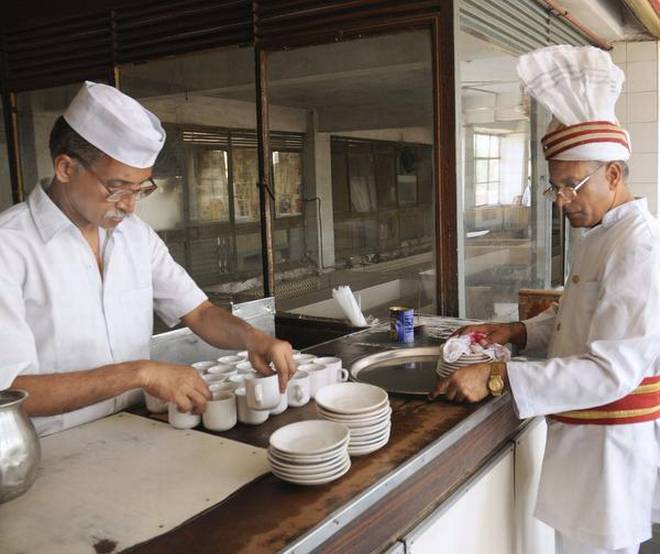At the pinnacle of the co-operative movement, Delhi’s Indian Coffee House brims with a rich history of common tastes
Today, coffee shop chains are the order of the day. Long before these became a fad, home-grown coffee shops established themselves as ‘by the common man, for the common man’, although there was nothing common about it. Patronised by the who’s who of Delhi, be it politicians, journalists, economists, thinkers, activists (perhaps they considered themselves as common then!), the joint was run purely on a cooperative basis and soon established itself as a hub for excellent coffee and snacks.
That’s the legacy of the Indian Coffee House in Delhi — the country’s first home-grown chain of coffee houses that turns 60 this year.
The outlets served no lunch or breakfast routines, but served tiffin or snacks throughout the day. There was excellent South Indian coffee with a couple of variations, as well as idli, dosa, vada, sandwiches and toast. The word spread and it soon became a popular ‘adda’ for anyone and everyone. The hallmark of cooperative movement, there were no workers or managers — everyone worked shoulder to shoulder.
How it all began
The year was 1957. The place — 10, UB Bungalow Road, Jawahar Nagar. Following its success, a branch was opened at Janpath in 1964. Soon, it was allotted space by NDMC at the Central Portion, where Palika Bazaar stands today. Here it soared, given the ideal location.
In Delhi, the Indian Coffee Houses tasted success and started operating canteens in various Government offices. It also opened branches across North India, and currently has around 10 outlets in the North. The canteen was frequented by Raj Narayan and Ram Manohar Lohia among others.
There are stories of how in the early 70s before Emergency, a van from Indira Gandhi’s residence would come to pick up idli, vada, sambar and coffee for visitors and functions regularly. Then for a rupee, one could get vadas, idlis and coffee to boot!
Turn of events
When the Connaught Place outlet was demolished without advance notice, it was forced to shift the entire operation to its current place, Mohan Singh Place, where it has been in operation since 1969. Most regulars swear that after this, it could never regain its erstwhile glory. A little sign on the outside of Mohan Singh Place proclaims, Indian Coffee House. Mohan Singh Place is known for its excellent economical denim jeans made within a few hours. The Indian Coffee House is located on the top floor of the building with a lift. The space is clean and quite nice, almost like a canteen.
Joining hands
So what started this cooperative chain of coffee houses? One can go back to the heady days of the cooperative movement, when this venture was thought of as a measure for retrenched workers to find employment.
As Narayanan Kutty, an old member of the Indian Coffee Workers Cooperative, says, “In the year 1957, the Coffee Board decided to close down its propaganda department and down the shutters on its Coffee Houses as well. The Communist leader AK Gopalan, leader of the Coffee Board Labour Union, Subhadra Joshi, MP, and Pt Jawaharlal Nehru, then Prime Minister of India — advised the retrenched employees of the Coffee Board to form their own co-operative societies. The employees welcomed this idea and formed their own cooperative societies, known as Indian Coffee Workers Cooperative Society. The first was formed in Delhi.”
PD Pradeep, Manager, who has climbed up the ranks, says, “Anyone who joins the establishment as a worker has to go through the rank and file, starting from the lowest. This ensures no one is a boss, but everyone is a worker. So when there is a shortage of hands, it is not uncommon to see managers chip in, shoulder-to-shoulder.”
The liveried bearers remind one of railway dining halls. Pradeep says, “Everything is made fresh. We do not buy off-the-shelf masalas. We make everything from scratch.” The coffee powder is procured from the neighbouring India Coffee Board.
In other parts though, the chain procures beans from Wayanad. This is roasted and powdered in-house for use. Filter coffee decoction is brewed in a huge steel coffee filter. For sambar, the spices are roasted and ground and no sambar powder is used. Coconut chutney is made using fresh grated coconut with roasted chana dal, ginger and green chilli. As Pradeep speaks, there is a sense of pride in being a part of such a cooperative-spirited venture.
Recipe for success
Pradeep says an interesting formula has been worked out by the establishment. “One kilo of rice and 250 grams of urad dal without husk gives 35 dosas. Similarly, one kilogram of potato with half a kilogram of onion gives masala for 18 dosas. One kilogram of rice and half a kilogram of urad dal makes 50 idlis, and one kilogram of urad dal gives around 50 to 55 vadas.” Any variation and the cook is taken to task. The reason — if it is more, that means the quantity is wasted; if lower, then the customer is short-changed.” Amul butter is used for butter dosa and Amul cheese for the sandwich. The prices are still common man-like.
The Indian Coffee House reflects another era, where the unity of the people under the cooperative banner to build businesses and the country was paramount. They are still relevant in today’s world, where Amul gives the best of MNCs a run for their money. A little more effort, a little more care, more vision and the Indian Coffee House could be pioneering coffee chains not only in India but even abroad!
In this weekly column, we take a peek at some of the most iconic restaurants
source: http://www.thehindu.com / The Hindu / Home> Life & Style> Food / by Chitra Balasubramaniam / September 14th, 2017


